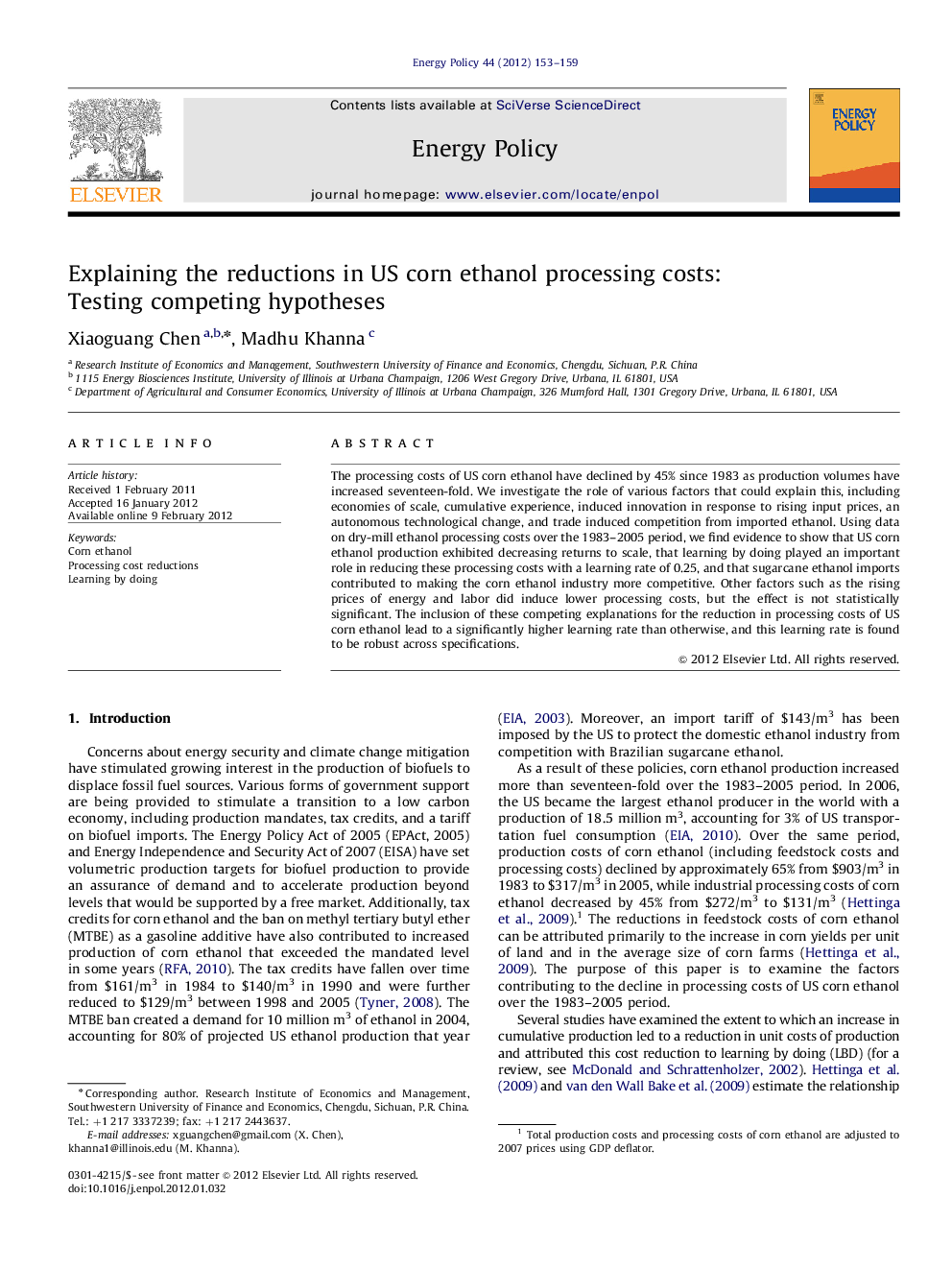| Article ID | Journal | Published Year | Pages | File Type |
|---|---|---|---|---|
| 995701 | Energy Policy | 2012 | 7 Pages |
The processing costs of US corn ethanol have declined by 45% since 1983 as production volumes have increased seventeen-fold. We investigate the role of various factors that could explain this, including economies of scale, cumulative experience, induced innovation in response to rising input prices, an autonomous technological change, and trade induced competition from imported ethanol. Using data on dry-mill ethanol processing costs over the 1983–2005 period, we find evidence to show that US corn ethanol production exhibited decreasing returns to scale, that learning by doing played an important role in reducing these processing costs with a learning rate of 0.25, and that sugarcane ethanol imports contributed to making the corn ethanol industry more competitive. Other factors such as the rising prices of energy and labor did induce lower processing costs, but the effect is not statistically significant. The inclusion of these competing explanations for the reduction in processing costs of US corn ethanol lead to a significantly higher learning rate than otherwise, and this learning rate is found to be robust across specifications.
► We investigate the role of various factors that could explain the reduction in US corn ethanol processing costs over the period 1983–2005. ► We find that US corn ethanol production exhibited decreasing returns to scale. ► Learning by doing played an important role in reducing these costs with a learning rate of 0.25. ► Sugarcane ethanol imports contributed to making the corn ethanol industry more competitive. ► Rising prices of energy and labor did induce lower processing costs, but the effect is not statistically significant.
